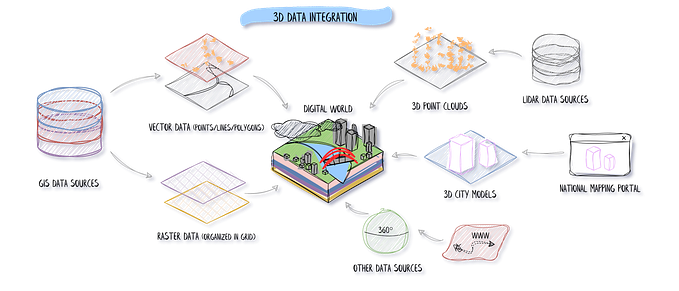UX copywriting and microcopy for better user experience
One of the most trending phenomena in the world of UX design right now is UX Copywriting and UX Microcopy. As a matter of fact, Google now shows four times the number of results than it used to ten years ago if a search for the previously mentioned terms is made. From being a niche profession based in Silicon Valley to be an essential part of UX designing, it shows how important the value and importance of user-focused copywriting is to the digital market as of now.
UX Copywriting can be distinguished as an umbrella term under which all writing within the bounds of a digital experience comes while UX Microcopy is a component of it, containing small bits of copy that are customized specifically.
What is User Experience (UX)?
First of all, let’s discuss what a User Experience (UX) is. It describes how, when and why we interact with a product or a service, followed by the way they feel about their overall experience. People have multiple user experiences every second.
A number of conditions affect these experiences such as:
- The reasoning behind using or purchasing something in the first place.
- The time at which the product is used i.e. day or year.
- Positive or negative surprises faced.
UX is applicable to both the physical and digital environments but our focus will be on its digital implementation. In order to satisfy the goals of the audience and the firms, a copy is used.
UX Copywriting:
An easy way to define User Experience Copywriting is to differentiate it from regular writing. If you tell someone you’re a writer, they would immediately place you in the category of someone aiming to write the next great novel or a screenplay writer working for a movie, right? But if you add the word copy to the term writer, a professional will understand that you write for businesses. The work of a copywriter is to write copy; which is the content targeted at marketing to potential buyers.
Mr. Nick Babich, a famous software developer who is passionate about user experience defined UX Copywriting very well as he goes, “UX Writing is the practice of UI copy that guides users within a product and helps them interact with it. UI copy includes buttons and menu labels, error messages, security notes, terms, and conditions, as well as any instructions on product usage. The primary aim of UX Writing is to settle communication between users and a digital product.”
Quite self-explanatory I think, don’t you?
In addition to this, it is the process of writing, structuring, and designing copy that moves customers and visitors of the digital world, towards the accomplishment of their goal in an intuitive and relevant way. The UX part is the knowledge of intelligently introducing certain messages in the context of a digital design while the writing part is fashioning the message itself.
A goal in mind is essential when copywriting. The next step is being able to achieve that goal and that is done by using the desires people display and offering them products and services to satisfy their needs. Eugene Schwartz’s theory of mass desire is what this is based on.
Examples of effective UX Copywriting:
Headlines:
In today’s world, applications of UX Copywriting can be seen all around. Searching the interweb for some sort of course in order to learn a new skill, stumbling across a catchy headline on a website would definitely spike your interest if… The ‘if’ in such a situation is very important and it would be followed by a few points:
- The copy used is kept succinct and to the point
- The format is bold enough to catch my eye
- Containing the term of my interest in the statement
The more the points present for me to check off my list, the more the positive impact it will have on me and make me click on it in order to engage with their product or service.
Call to actions (CTA):
A CTA could be an image or a line of text which attracts visitors and customers to take action. In order to make them effective, all the audiences visiting your website should be prompted to interact with your services in a way that would benefit both parties in the equation. Well-worded and clever calls to action have a better chance at fulfilling their purpose and boosting sales.
Interface hints:
These input hints help users understand what information is needed to be entered into which empty field. They are supposed to be concise and clear in order to make sure that the users can input the right data without a lot of mental effort. Especially in situations where there is an interaction that is important and confusing at the same time, such interface hints come in handy.
Conversational UIs:
Conversational User Interfaces are services that give the customer or visitor an option to interact with the computer on human terms. They are present to help out the users with what to do next or any query that they may have. These UIs uplift the chances for companies to increase marketing by keeping the user interested through interactive content.
Strategies for better UX Copywriting:
In order to be a maestro in UX copywriting, there are some general rules UX copywriters should keep in mind as they would only benefit them. Listening to and understanding the audience’s hopes, fears, desires, and frustrations are the essential insights needed for a good copy and in turn a beneficial user experience. The acceptance of interweb stereotypes is also important. Users expect buttons to be clearly pictured as they should be and underlined and highlighted hyperlinks for them to click on and reach where they want to and these options should be available to increase the chances of a better result.
A copy should be concise and short, no more-no less meaning long blocks of text should be avoided. The use of Jargon should be reduced to almost none as it reduces the simplicity and clarity. Writing in present tense and active voice shapes up a copy only positively. The identification of interactive elements to be used related to the topic of interest is crucial and should be looked into properly. Graphics are a great way to help communicate as well as catch the attention of the users so they go a long way in this process.
Impact of UX Copywriting:
If we talk about how UX copywriting is changing the world for the better, we would find out that users are now used to it being a part of their daily lives and that’s why a company working digitally must care for it. Websites that have a better focus on creating a superior user experience by copywriting have to prove that the visit-to-lead numbers jumped to even 400%. In collective data collection from different studies, it was found that 97% of users rate their UX to be on top of their list of elements they look for while judging the quality of an app or website. It was also recorded that everyone except 10% of these users was sure they would stop using the service if they would have difficulty in navigating what they need to do. This is the impact seen in the digital world.
UX Microcopy:
UX Microcopy is a term that has gained more popularity due to the widespread use of websites and mobile apps and the increase in their generality in order to interact with services from some company. This has changed the way we look at the interweb as it now revolves around being interactive and engaging rather than the old informative and transaction-based system. This is the reason why the effect of a text or button available at a digital interaction is much more important than it ever was before.
Content strategy, Copywriting, and Microcopy are all interlinked and cannot work without one another. The content strategy being the broadest concept comes at first after which a narrower approach based on product writing in order to aid a user’s digital journey from the start till the end called copywriting takes place. Microcopy then steps in defining a category that is nested under UX Copywriting and proves to be dependent on it. It can be thought that User Interface and Microcopy are interchangeable but UX Copywriting as discussed before is much broader.
A professional of the field, Mr. Nick Babich, the definition of Microcopy is as follows, “Microcopy is the term for the small bits of copy on an app’s interface that helps users do ‘stuff’. Microcopy examples are error messages, contact form explainers, e-commerce hints.”
So, we can say that it is a subcategory of UX Copywriting but it isn’t as simple as it may seem which can be explained by what Mr. Joshua Porter said, “Don’t be deceived by the size of microcopy. It can make or break an interface.”
UX Microcopy comes in before, during, and after an action. How? Well, firstly it encourages users to act on like in Call to Actions, etc. Secondly, the Buttons on headlines, the tooltips, and input hints are used to direct the users toward the right way. Thirdly, the messages that provide information about errors or if something is done successfully.
Examples of effective UX Microcopy:
Improve the conversion rate:
The main aim of a business running an e-commerce website is to bring about as many conversions from people visiting their sites as possible. An example of this is Yoast updated their checkout flow and added this text next to their Total button, ‘there will be no additional costs and this made for 11.3% more conversion for them. The fear of additional or hidden costs canceled out by just adding some text is what caused this boost for Yoast.
Relieve users’ from their worries:
Microcopy is proven to be foundational when it comes to ensuring that the users feel safe when sharing their information on a website and not worry about their privacy and safety. For example, when asking a user to share their email address in order to sign up might make them wonder why the website needs it and could possibly make them double-minded about the action they were about to take. In order to make sure they don’t back off, outlining the reason near the box where it’s asked for makes the user feel comfortable. Websites like the Guardian Newspaper provide you with a text underneath which says, ‘So we can send your newsletters’.
Elevate users’ confidence:
This can all be explained by taking Airbnb into account. They use Microcopy to make it possible for their users to interact with the hosts. Each step of the way the user needs to go through in order to get in contact with the host is properly explained by the company giving birth to a trustworthy relationship and thus, helping the company create a better brand image that emits safety.
Strategies to write better Microcopy:
A few important points, if stored in the cognitive thinking process before attempting to write Microcopy, can go a long way. While brainstorming for ways to decide on Microcopy options, keeping in mind that using the language that we use for talking which is dynamic and easily understood rather than technical jargon-based statements is important. This only makes the user feel more open and relaxed which can make the situation better, not worse.
The focus on writing clear and not vague statements to display errors or problems reduces the number of questions that would rise up in the users’ minds and increase confusion. If possible, a solution should be made available and clearly labeled so that the user does not feel stuck or agitated rather feels better about the issue. Motivational behavior should be exhibited to increase positive feedback and ensure returning of the user to become a long-term customer of your services.
Conclusion:
Ending this with some statistical data to prove how much change a better understanding of UX Copywriting and Microcopying can make seems like a good choice as numbers speak louder than words in the world of business. An e-commerce website, as analyzed by Mr. Peep Laja, had 84.71% of their audience proceeding to buy and after a few tweaks in the copywriting used on that website, that audience percentage now jumped to 90 increasing 461 orders per month and resulting in an increase of $87,175 in sales. Quite impressive, isn’t it?








